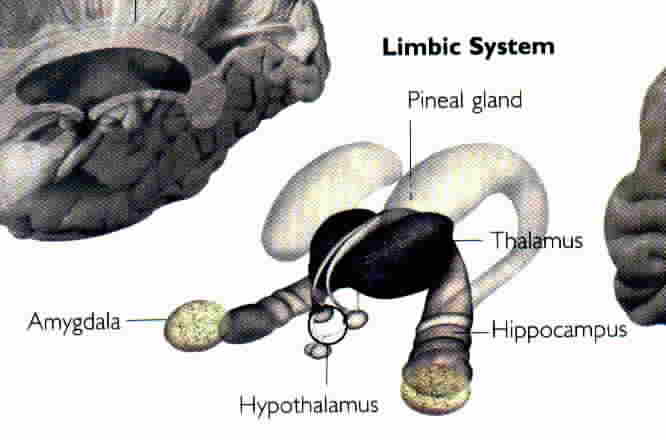
Neuro term. 1. Those interlinked modules and pathways of the brain in charge of emotions, feelings, and moods. 2. The "entire neuronal circuitry that controls emotional behavior and motivational drives" (Guyton 1996:752). 3. The emotional core of the human nervous system (Cytowic 1993).
Usage: A great deal of our nonverbal communication reflects happenings in the limbic system (see, e.g., FACE, MAMMALIAN BRAIN). Nonverbal signs, signals, and cues disclose limbic emotions and attitudes more openly and with greater honesty than words.
Observation. When shopping for consumer products, we heed limbic rather than rational thoughts.
Evolution. In human beings, the limbic system grew in tandem with the cerebral cortex (Armstrong 1986). Thus, ours is the most emotional--as well as the most intellectual--species on earth.
RESEARCH REPORTS: 1. The limbic system "plays a key role in the evolutionary survival and eventual success of hominids" (Eccles 1989:97). 2. Regarding nonverbal behavior, the limbic system's a. amygdalar division promotes feeding, food-search, angry, and defensive behaviors related to obtaining food; b. septal division promotes sexual pleasure, genital swelling, grooming, courtship, and maternal behavior; and c. thalamocingulate division promotes play, vocalization (e.g., the separation cry), and maternal behavior (MacLean 1993). 3. "While the cortex contains our model of reality and analyzes what exists outside ourselves, it is the limbic brain that determines the salience of that information" (Cytowic 1993:156). 4. The cerebral cortex "has more inputs from the limbic system than the limbic system has coming from the cortex" (Cytowic 1993:161). 5. Many emotional systems, in addition to the limbic system, may exist in the brain (LeDoux 1996:103).
Neuro-notes. The limbic system includes the amygdala, anterior thalamic nucleus, cingulate gyrus, fornix, hippocampus, hypothalamus, mammillary bodies, medial forebrain bundle, prefrontal lobes, septal nuclei, and other areas and pathways of the brain. The hypothalamus, a key player, mediates nonverbal behaviors through the brain-stem reticular nuclei. When excited, the reticular nuclei arouse cerebral as well as spinal circuits. (N.B.: An important two-way link between the limbic system and brain stem is the medial forebrain bundle.)
Copyright 1999 (David B. Givens/Center for Nonverbal Studies)
Detail of illustration from Mapping the Mind
(copyright Weidenfeld & Nicolson 1998)